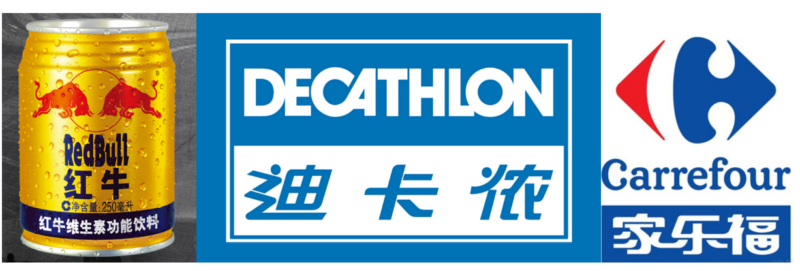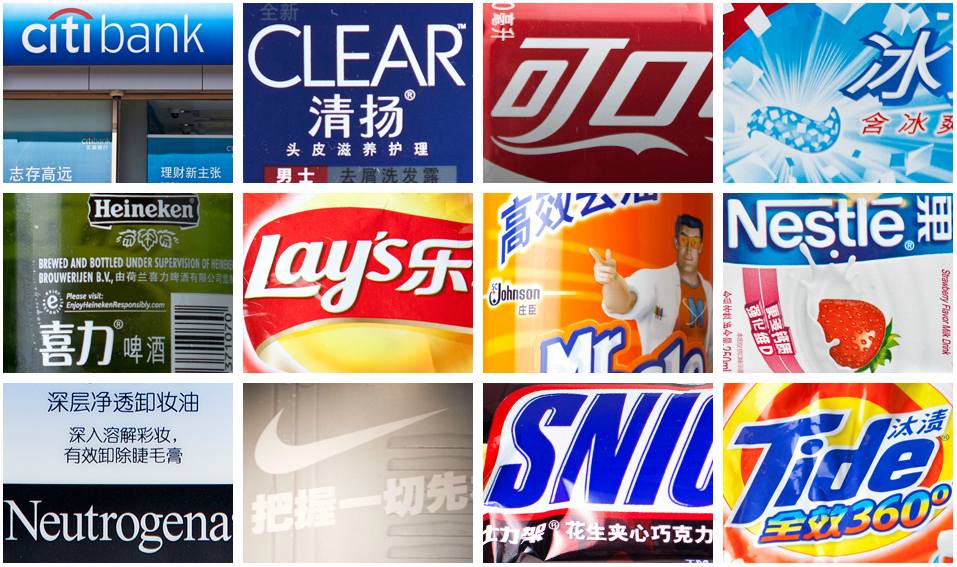Entering the Chinese market presents a tantalizing opportunity for foreign companies, given its substantial import/export revenue of RMB 42 trillion in 2022. However, navigating this market comes with numerous challenges, beginning with the crucial task of brand naming in China.
A good brand name serves as the initial point of contact between consumers and brands. A Chinese brand name can convey brand values, distinguish it from competitors, and leave a lasting impression. It is a crucial step of localization in fostering a recognizable and memorable presence in China. That’s why Daxue Consulting designed a brand naming strategy that is creative yet rooted in data.
Download our report on Gen Z consumers

Why brands should have a Chinese name
A majority of Chinese consumers won’t remember a brand name in English. In addition, creating a Chinese brand name is an opportunity to add another layer of meaning to the brand.
Here are more reasons why a brand name in Chinese is a crucial aspect of a market strategy:
- Accessibility and Relatability: A Chinese name makes your brand more accessible and relatable to Chinese consumers, who often prefer brands with names they can easily pronounce, spell, and understand.
- Cultural Respect and Understanding: Having a Chinese name demonstrates cultural respect and understanding, showing that your brand values and appreciates the rich cultural heritage of China.
- Enhanced Visibility and Memorability: A Chinese name can help your brand stand out in the crowded Chinese market, making it easier for consumers to recognize and remember your brand amidst a sea of competitors.
- Overcoming Language Barriers: By adopting a Chinese name, you can overcome potential linguistic and cultural barriers, fostering smoother communication and interaction with Chinese customers.
Crafting a Chinese brand name is never just a simple translation. The name has to sound pleasing to native speakers, use characters that convey positive meanings that align with the brand’s desired image, and it should not be similar to anything offensive in the wide range of Chinese dialects.
Understanding the “art” of brand naming in China: literal translation, translation by assonance, and combined translation
Selecting the appropriate Chinese name for a foreign brand requires careful consideration to avoid misinterpretations or unintended cultural insensitivity. Various methods exist for translating brands into Chinese, each with its nuances and potential impact.
Some brands opt for a straightforward transliteration of their sound, while others may choose to convey the essence or message of their brand through Chinese characters. The literal translation is straightforward for some brands, of which Red Bull “红牛” (Hongniu) is the perfect example. However, this method does not always capture the brand’s essence.
Adidas, on the other hand, opted for a translation more focused on phonetics rather than the actual meaning of the characters. The German sportswear brand, indeed, chose “阿迪达斯” (Ā dí dá sī) to enter the Chinese market, which has a strong recall to its brand name used worldwide.
Carrefour, instead, adopted a hybrid approach combining phonetic elements with semantic meaning, resulting in a name that resonates with Chinese consumers while maintaining ties to the original brand. Its Chinese name “家乐福” (Jialefu), not only has similarities with its original name but also utilizes the words “family, happiness, and fortune”, which might have a positive effect on the consumer’s perception of the brand.

An appropriate choice of characters may avoid costly mistakes in the translation process
When companies approach brand naming in China, they have to take into consideration that the name shall not only have resemblances with its foreign respective. It also has to be easy to read and remember; plus, it needs to transmit the values of the company to better improve its positioning once it has entered the market. The combination of the Chinese characters and their meanings is crucial for a good translation. It’s especially important because a slight modification in the tone of a character can heavily influence its meaning and the way it is written.
Many companies that initially entered the Chinese market without fully understanding its language and culture were compelled to change their names due to serious translation mistakes. Mercedes-Benz is a notable example. In the 1980s, the German car manufacturer entered the Chinese market under the name “奔死” (bensi), which translates to “rush to die” and was far from appealing for a car brand. However, in 2005, the brand established its first joint venture in Beijing with BAIC Motors and was registered under the name “奔驰” (benchi), meaning “run quickly”. This name change proved to be successful, and it continues to be used to this day.
When it comes to luxury and high-end brands, crafting a suitable Chinese name involves strategic consideration of cultural connotations and brand identity. Louis Vuitton, a renowned French fashion house, exemplifies this approach. In 1992, when LV inaugurated its first “Maison” in Beijing, it carefully selected the Chinese characters “路易威登” (Lùyì Wēidēng). This choice was influenced by both the phonetic similarity to its French name and the symbolism of the characters. The character “威” (Wēi) signifies “power,” while the final character suggests ascending to great heights, evoking notions of prestige and aspiration.
Similarly, Gucci, crafted its Chinese name “古驰” (Gǔchí) to convey a sense of heritage and preciousness. The use of the character “古” (Gǔ), meaning “ancient,” underscores the brand’s rich history and tradition.
In contrast, Chanel’s entry into the Chinese market in 1999 saw the selection of the name “香奈儿” (Xiāng Nài Ér). Notably, the character “香” (Xiāng), meaning “fragrance,” reflects the brand’s renowned line of perfumes. This strategic choice emphasizes the intrinsic qualities of Chanel’s products, aligning with the Chinese consumer’s appreciation for luxury and refinement.
Product naming in China presents another layer of challenges
In the Chinese market, companies often find that they don’t have full control over what consumers call their products. Consumers frequently give them nicknames, especially for luxury items like purses and bags from famous foreign brands. For instance, the famous LV purse “ONTHEGO” was given the nickname “丛林包” or “jungle purse” for its versatility.
Beauty products are another segment where nicknaming is trendy among Chinese consumers. Often, they coin nicknames that mainly resemble their function or an intrinsic characteristic. For example, the “SK-II facial treatment essence” is commonly known as “神仙水” or “the immortal water,” highlighting its perceived miraculous effects.
Other products may derive their nicknames from distinct packaging characteristics. One example is the Japanese luxury cosmetics company Decorté. For its line of moisturizing lotion, they selected the nickname of “紫苏水” or “purple water” because of the bottle’s colour. Another example is the Bobby Brown’s face exfoliant, called “胡椒粉” or “black pepper powder” due to its resemblance to the spice.
To ensure consistency and control over their product names, many brands now introduce products with predetermined nicknames embracing consumer-given nicknames. For example, SK-II’s treatment essence is officially marketed as “神仙水” on the company’s website. The company is therefore acknowledging and leveraging the widely accepted consumer nickname.

Trademark registration in China: the step you should never omit
Trademark registration in China is a crucial step brands can’t afford to skip. Registering a trademark protects brands from copycats and counterfeiters who could damage brand reputation and steal customers.
- Start Early: Begin the registration process as soon as possible to prevent others from claiming your brand name.
- Work with Experts: Consider hiring a local trademark attorney or agency familiar with Chinese laws and procedures to navigate the process smoothly.
- Cover All Bases: Register your trademark for all relevant categories and classes to ensure comprehensive protection.
- Stay Updated: Keep track of renewal deadlines and changes in regulations to maintain your trademark’s validity and protection.
By prioritizing trademark registration in China, you’re safeguarding your brand’s identity and future success in this dynamic market.
A wisely translated brand name is the first step to receiving positive responses from Chinese consumers
- The Chinese market is a vast and dynamic ecosystem. An effectively translated name is crucial for making a good impression on consumers.
- In the “art” of transforming the name of a brand into Chinese, characters, tones and meanings are crucial to avoid costly mistakes.
- Literal translation, translation by assonance, and phono-semantic translation are the three most common ways in which a brand decides to translate its name into Chinese. Whilst the first is all about translating directly into Chinese language, the other two take into consideration also the assonance and the meaning of characters.
- Some companies have further improved the translation of their brands by using characters associated with the quality of their products, or simply summarizing what is the brand about and what it sells.
- Sometimes a brand does not have complete control over its products’ names. Chinese consumers often tend to give nicknames to luxury and beauty products based on both intrinsic characteristics and the quality of a product. To avoid this problem, many companies launch their products together with a nickname.
- Luxury brands leverage the exclusivity and the history of their products by adding characters strictly linked with power and preciousness to their names, for example, LV and Gucci.
We are a team of experts on brand naming in China
Crafting a compelling Chinese brand name is pivotal for foreign brands entering China. At Daxue Consulting, we’re offering a range of naming services tailored to clients’ needs: brand naming, product naming, corporate naming, and more.
Here’s how we can help:
- Research: Understanding the client’s brand identity through targeted inquiries.
- Analyze: Deep dive into competitor and consumer insights.
- Detect: Identifying the company’s unique vibes for accurate communication.
- Brainstorm: Generating a diverse range of keyword ideas aligned with the brand.
- List: Curating a comprehensive list of potential names, aligned with brand positioning.
- Check: Rigorous checks to ensure legal availability and cultural resonance across Chinese dialects.
Contact our branding experts at dx@daxueconsulting.com to find a name for your Chinese brand or product.






